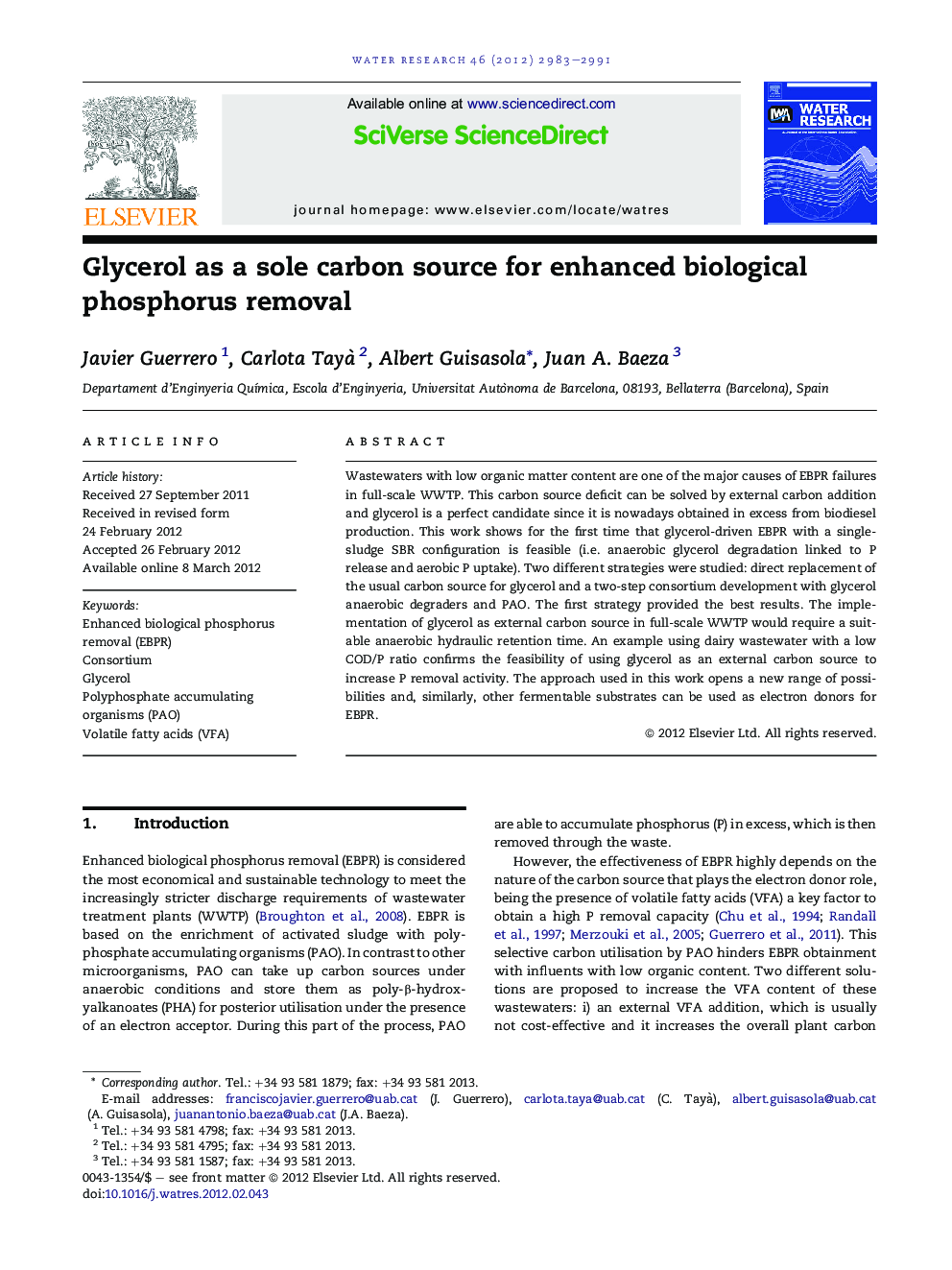| Article ID | Journal | Published Year | Pages | File Type |
|---|---|---|---|---|
| 4482790 | Water Research | 2012 | 9 Pages |
Wastewaters with low organic matter content are one of the major causes of EBPR failures in full-scale WWTP. This carbon source deficit can be solved by external carbon addition and glycerol is a perfect candidate since it is nowadays obtained in excess from biodiesel production. This work shows for the first time that glycerol-driven EBPR with a single-sludge SBR configuration is feasible (i.e. anaerobic glycerol degradation linked to P release and aerobic P uptake). Two different strategies were studied: direct replacement of the usual carbon source for glycerol and a two-step consortium development with glycerol anaerobic degraders and PAO. The first strategy provided the best results. The implementation of glycerol as external carbon source in full-scale WWTP would require a suitable anaerobic hydraulic retention time. An example using dairy wastewater with a low COD/P ratio confirms the feasibility of using glycerol as an external carbon source to increase P removal activity. The approach used in this work opens a new range of possibilities and, similarly, other fermentable substrates can be used as electron donors for EBPR.
► Glycerol is demonstrated for the first time as a suitable carbon source for EBPR. ► SBR configuration 4 h AN/3.5 h AE and 0.5 h SET allows stable net-P removal. ► The direct replacement is a better strategy than the anaerobic consortium development. ► The utilization of glycerol for EBPR would require a longer anaerobic phase in WWTP.
